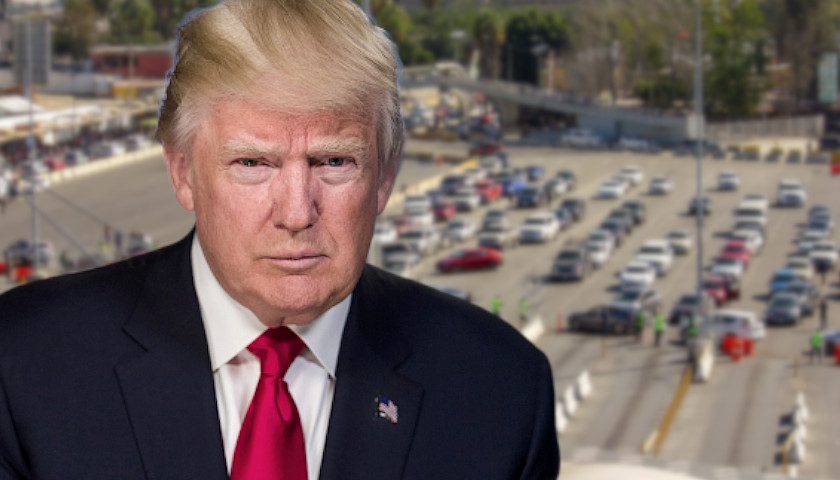The United States and Mexico have reached a deal on migration to avert tariffs, but U.S. officials say President Trump retains the authority to impose tariffs if Mexico fails to live up to it.
“I am pleased to inform you that The United States of America has reached a signed agreement with Mexico. The Tariffs scheduled to be implemented by the U.S. on Monday, against Mexico, are hereby indefinitely suspended,” President Donald Trump said Friday on Twitter.
“Mexico, in turn, has agreed to take strong measures to stem the tide of Migration through Mexico, and to our Southern Border. This is being done to greatly reduce, or eliminate, Illegal Immigration coming from Mexico and into the United States,” Trump said.
Speaking on the sidelines of the G20 finance ministers meeting in Japan, U.S. Treasury Secretary Steven Mnuchin told the Reuters news agency Saturday the U.S.-Mexico immigration deal met President Donald Trump’s objectives of fixing immigration problems on the southern U.S. border, but that tariffs could be imposed if Mexico does not meet U.S. expectations.
“Our expectation is that Mexico will do what they’ve committed to do and our expectation is that we won’t need to put tariffs in place, but obviously if that’s not the case, the president retains that authority.”
U.S. and Mexican officials returned to the negotiating table Friday for a third day of talks to find a way to stem the flow of Central American migrants across the U.S. southern border that had threatened trade between the neighboring countries.
Trump’s trade wars with Mexico and other countries appear to have spooked American companies into putting the brakes on hiring, as they added just 75,000 jobs in May, far fewer than the 180,000 economists expected, the Labor Department reported Friday.
Although the jobless rate held steady at a 50-year low of 3.6%, Friday’s figures are the latest signal the U.S. economy, while healthy, is weakening. Manufacturers, which are particularly sensitive to trade disputes, added only 3,000 jobs, extending an anemic streak of hiring in the sector.
U.S. and Mexican officials discussed a deal calling for Mexico to sharply increase patrols of its border with Guatemala to curb migration, The Washington Post reported, with the deployment of 6,000 National Guard troops. The newspaper said Mexico and the U.S. could overhaul asylum rules throughout the region, requiring Central Americans to first seek refuge in Mexico rather than traveling through it to reach the U.S.
With such a plan in place, the United States could send Guatemala asylum seekers to Mexico, and those from Honduras and El Salvador to Guatemala.
Earlier Friday in Mexico City, President Andres Manuel Lopez Obrador reiterated his own optimistic position.
“There is dialogue and an agreement can be reached,” Lopez Obrador said. “I’m optimistic we can achieve that.” He added it was a mistake, though, for the U.S. to link migration with trade, reiterating migration must be addressed by solving social and economic problems in Central America. “The causes of the migratory chaos aren’t being analyzed, only the effects,” he said.
U.S. authorities have said more than 100,000 undocumented migrants, mostly from the three Central American countries, have crossed into the United States in recent months. The U.S. government announced Wednesday that in May 144,000 migrants were detained at the border, up 32% from April. It was the highest monthly figure in 13 years.
Some Republican lawmakers, normally close political allies of Trump, had said they would try to block any potential tariffs with legislation, which also would draw wide support from opposition Democrats. Numerous lawmakers feared rising consumer costs for Americans if the tariffs were imposed on Mexican goods, including cars and numerous food products exported to the U.S.
– – –
Cindy Saine at the State Department contributed to this report.





